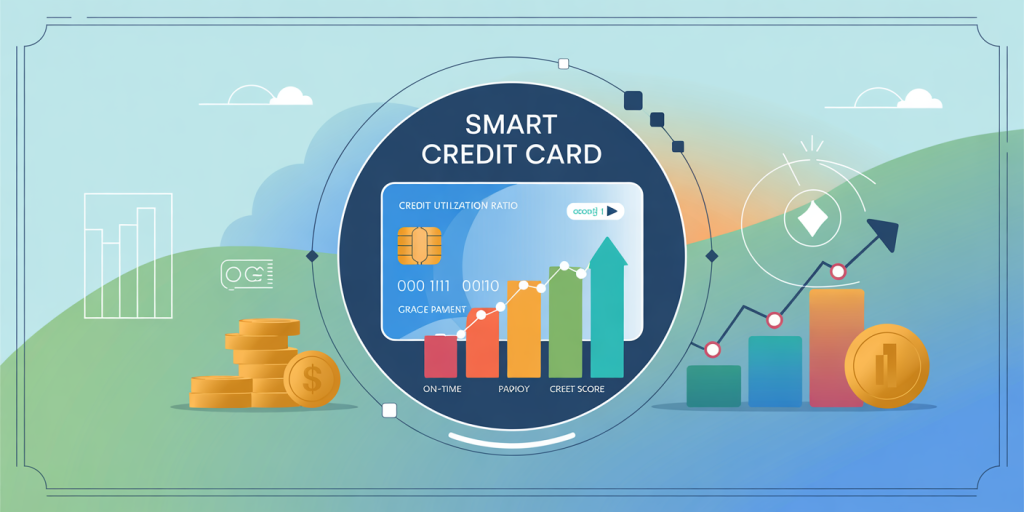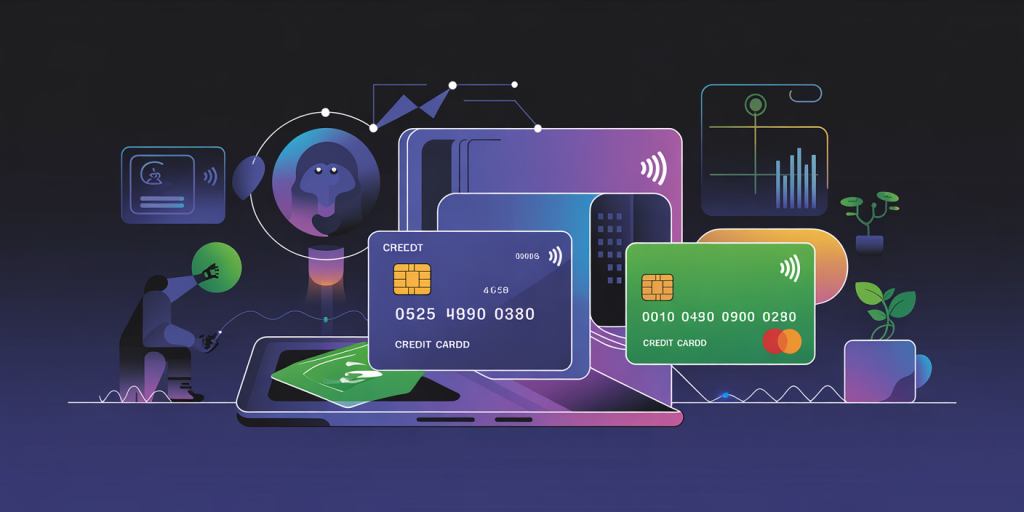Smart Credit Card Strategies: Use Credit Without Getting Burned
Credit cards are powerful financial tools that offer convenience, rewards, and access to funds in emergencies, but they can also lead to debt and poor credit scores if not managed wisely. According to a 2023 report from the Federal Reserve, American consumers held over $930 billion in credit card debt, highlighting the widespread challenges many face in balancing credit use with financial health. The secret to leveraging credit cards effectively lies in smart strategies that maximize benefits while minimizing risks. This article explores practical and data-driven methods to use credit responsibly, backed by real-life examples and expert insights.

—
Understanding Credit Card Fundamentals
Before diving into advanced strategies, it’s essential to comprehend how credit cards work. At its core, a credit card allows you to borrow money up to a preset limit, repayable within a billing cycle. Paying on time avoids interest charges, while carrying a balance accrues costly finance charges typically averaging around 16% to 24% APR (Annual Percentage Rate), depending on the card type and creditworthiness.
One practical example is the “grace period” – the time between the end of the billing cycle and the payment due date during which you won’t pay interest if the balance is paid in full. Failing to understand this can lead to needless fees. For instance, Jane, a young professional, once paid only the minimum balance on her card, causing her debt to snowball due to interest accrual. After learning about grace periods and interest rates, she began paying her balances fully each month, eliminating interest charges and improving her credit score within six months.
Credit utilization ratio is another vital concept: it’s the percentage of your credit limit currently in use. FICO recommends maintaining utilization below 30% to boost credit scores. For example, if you have a $10,000 credit limit, keeping your outstanding balance under $3,000 optimizes your credit profile without risking high debt.
—
Maximize Rewards Without Overspending
One of the most attractive benefits of credit cards is the rewards programs they offer, including cashback, points, and travel miles. However, rewards are only beneficial if you do not overspend or pay interest unnecessarily. According to a 2022 study by the Consumer Financial Protection Bureau, 45% of rewards credit card holders reported carrying a balance and paying interest, negating the potential gains of points or cashback.

To utilize rewards wisely, match your card’s benefits to your spending patterns. For example, if you spend heavily on groceries and gas, select cards that offer 3%-5% cashback in these categories. Consider Susan, who tracked her monthly expenses and switched to a card offering 5% cashback on supermarket purchases. She earned over $150 in rewards annually without increasing her spending.
Another strategy is to pay off the full statement balance every month, avoiding interest that can erode reward value. Additionally, using multiple credit cards strategically to leverage different reward categories can yield greater returns, but requires disciplined management to avoid mismanagement or missed payments.
| Reward Type | Best For | Average Cashback/Points | Typical Fees |
|---|---|---|---|
| Cashback Cards | Everyday spending | 1% to 5% cashback | $0 to $95 annual fee |
| Travel Reward Cards | Frequent travelers | 1x to 3x points per dollar | $95 to $550 annual fee |
| Store-Specific Cards | Loyal customers to one brand | 5% or more at affiliated stores | Usually no annual fee |
Consider annual fees against rewards value — a card with a $95 fee can be worthwhile if you earn $200+ back annually. If not, a no-fee card may be preferable.
—
Avoid Common Pitfalls: Fees and Debt Traps
While credit cards offer financial flexibility, fees and debt traps can quickly erode your financial health. Common pitfalls include late payment fees, over-limit fees, cash advance fees, and promotional interest resets. According to NerdWallet, late fees can reach up to $41, and frequent late payments damage credit scores severely.
A notable example is Alex, who underestimated his payment due dates and incurred several late fees, pushing his credit utilization ratio above 50%. This led not only to high fees but also a drop in his credit score by 40 points. After setting up automated payments and reminders, Alex avoided future penalties and began rebuilding his credit profile.
Another debt trap is cash advances with exorbitant fees and immediate interest accrual. Using your credit card to withdraw cash should be avoided unless absolutely necessary due to high costs and lack of grace periods.
Proactively monitoring accounts through mobile apps and notifications is a simple yet effective way to avoid surprises. Most credit card issuers now offer real-time alerts for transactions, payment reminders, and suspicious activity to help maintain control.
—
Building and Maintaining a Strong Credit Score
A strong credit score unlocks better interest rates on loans, higher credit limits, and improved financial opportunities. Smart credit card use plays a pivotal role in building credit, along with responsible repayment and credit mix management.
On-time payments are the single most influential factor, making up 35% of a FICO score calculation. For example, Maria noticed her credit score improve from 620 to 740 within 18 months by consistently paying her credit card bills on time and keeping utilization low.
Length of credit history (15%), credit mix (10%), new credit (10%), and utilization (30%) are additional factors for consideration. Some experts advise maintaining old accounts to benefit from longer credit history, but be cautious of dormant cards with annual fees.
Comparatively, consider two credit card users over one year:
| Factor | User A (Smart Strategy) | User B (Poor Strategy) |
|---|---|---|
| On-time payments | 100% | 75% |
| Credit Utilization | 20% | 60% |
| Length of History | 7 years | 1 year |
| Number of New Cards | 0 | 3 |
| Credit Score Change | +80 points | -30 points |
Clearly, User A’s deliberate management yields long-term credit benefits, improving financial options.

—
Strategic Use of Balance Transfers and Credit Card Consolidation
Credit card debt consolidation can be a lifeline for those struggling with high-interest balances. Balance transfer cards offer promotional 0% APR rates for 12 to 21 months, allowing consumers to pay down principal without accumulating interest. According to a 2023 report by CreditCards.com, balance transfer offers with 0% APR can save the average borrower up to $1,200 if balances are fully repaid within the promotional period.
Using balance transfers effectively requires an understanding of associated fees (usually 3%-5% of the transferred amount) and commitment to paying off balances before the promotional window expires. Consider John, who consolidated $8,000 of high-interest credit card debt onto a 0% APR balance transfer card with a 3% fee. Over 18 months, he paid down the entire debt without accruing any additional interest, saving over $1,500 in finance charges compared to his previous cards.
It is important to avoid further spending on old cards during this process to prevent additional debt. Also, be mindful that applying for multiple new cards can slightly lower credit scores temporarily due to hard credit inquiries and potential new account impacts.
—
The Future of Credit Card Usage: Trends and Technologies
The landscape of credit card use is evolving rapidly with technological advancements and shifting consumer behaviors. Contactless payments and mobile wallets, like Apple Pay and Google Pay, are now standard features in many credit cards, enhancing security and convenience. The Nilson Report states that contactless transactions surpassed $1 trillion globally in 2023, evidencing substantial adoption.
Artificial intelligence and data analytics are also driving personalized credit experiences. For example, several issuers now provide AI-driven tools to optimize spending based on rewards, alert customers of upcoming bills, and suggest credit limit changes based on usage patterns. These tools can help users avoid mistakes and get better rewards, empowering them with actionable insights.
Sustainability is becoming a priority as well. Numerous credit card companies now offer “green” cards that contribute a percentage of spending to environmental causes. This aligns financial habits with social values, attracting millennials and Gen Z consumers.
Future strategies will likely incorporate biometric authentication, blockchain-based secure transactions, and enhanced fraud detection to improve security and user trust. Consumers who stay informed and adapt to these innovations are better positioned to benefit from credit cards without falling victim to common financial pitfalls.
—
Using credit cards smartly is all about balance: leveraging benefits while avoiding traps. With careful planning, timely payments, and strategic use, consumers can build credit, earn valuable rewards, and maintain financial health. By understanding fundamental credit card mechanics, optimizing rewards, avoiding fees, managing debt, and embracing future trends, you can confidently use credit without getting burned.
